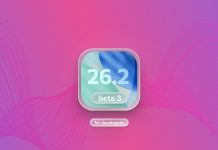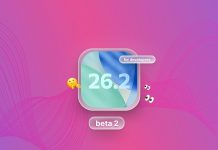For those of us who speak more than one language, writing in iOS can be somewhat annoying. To make use of features like the built-in autocorrect functionality, we need to switch between languages on the iOS keyboard (1).
On the Mac this “problem” has been solved — at least partly — for languages with Latin writing systems present in Germanic, Italic and most Balto-Slavic languages: The OS determines the language currently in use and automatically offers spell checking for this language. However, once the user switches to a non-alphabetic language (2), this functionality is gone, because the input system changes.
Even for alphabetic languages the keyboards differ strongly sometimes, accounting for the peculiarities of a specific language. Think of the three most prominent keyboard layouts — QWERTY in English speaking countries, QWERTZ in German speaking countries, and AZERTY in French speaking countries — each language has a specific set of diacritical marks or special letters that need to be accessed more or less frequently.
Venturing into languages with Cyrillic or Greek alphabets and then further into non-alphabetic languages not only reinforces the argument, but also showcases one of the major strengths of virtual keyboards: adaptability.
But this is also where problems arise. For example, the language-specific keyboards I have activated on my iOS devices are German, British English (QWERTZ layout), Chinese (Pinyin input) and the Emoji selector. The two languages I use most are German and English, but iOS forces me to cycle through all available keyboards to get back to the first one. This results in annoying load times, mostly because the Emoji keyboard takes longer to load than the others.
What are potential solutions for this convenience problem? I can think of three things:
- Language auto detection for languages with the Latin writing system, while giving the user the ability to set a preferred keyboard layout (like you can already) and a preferred set of special characters (3).
- Certain keyboards should be fast-switchable, and others only available upon manual selection; thus not forcing the user to cycle through x keyboards, some of which he or she might need only seldom (4).
- Bonus: An easily editable user dictionary for each language used, as well as iCloud based synchronisation between iOS devices and maybe even OS X.
I’d be glad to hear your thoughts on the matter in the comments.
- Some may say that this functionality is unnecessary or counterproductive, but especially when typing on an iPhone, autocorrect helps alleviate some of the inherent disadvantages of a small keyboard. ?
- Found for example in Chinese, Arabic, Hebrew, Japanese, Korean, or Indic ?
- I’d choose the special characters for German: ä, ö, ü and the most commonly used diacritics. ?
- Again a personal example: Fast-switchable; German, English (given there is no language auto detection). Selectable; Chinese, Emoji. ?







